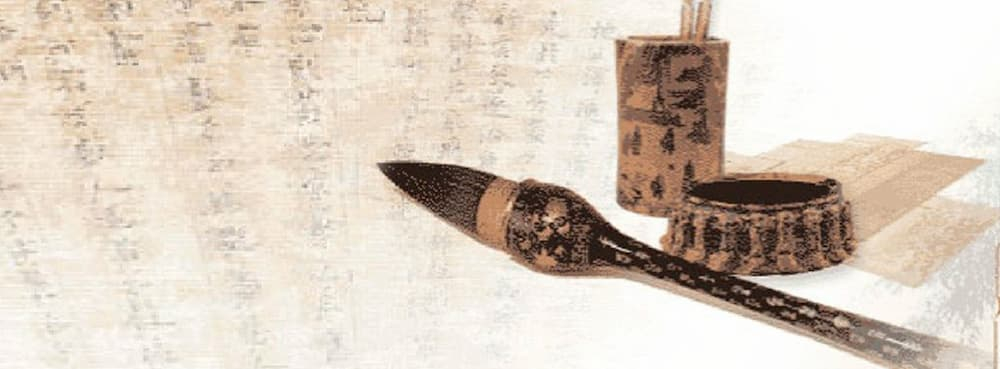
Four Treasures of the Scholar’s Studio
Splendid
Chi Culture
Topic
Four Treasures of the Scholar’s Studio
The term wenfang, translated as “studio,” first appeared during the Northern and Southern Dynasties (420–589). In the Tang dynasty (618–907), it referred to a place for studying and painting; but also served as a place to display and store collectables. In the studio, people would appreciate them, and the room served as a venue for intellectual colleagues and friends. In pre-modern China, it was necessary for a studio to be equipped with the “four treasures,” namely: paper, writing brush, ink, and inkstone. These are the traditional tools for writing and drawing.
Papermaking, gunpowder, the compass, and printing are collectively called the four great inventions of ancient China. Thousands of years of Chinese culture and tradition have been preserved due, in large part, to paper. Paper was first made in the Eastern Han dynasty (25–220). As time progressed, the technique of papermaking developed and improved resulting in greater varieties of paper.
The brush as a writing and painting instrument is unique to China. Although tradition says that the Qin general Meng Tian (d. 210 BCE) invented the brush, it was already in use as early as three thousand years ago. Meng Tian did not invent it, but he improved on the design by using the hair of rabbits from Zhongshan (modern Xuanzhou, Anhui province). The shaft was made of fine bamboo, the front end of which was hollowed out for the insertion of the brush tip. This improvement was a watershed in the history of Chinese brush making, as it set the basic shape of the brush. The user must choose from different sizes, tips, and manufacturers; each choice would contribute something different to the calligraphy or painting and a good scholar understood that. Calligraphers and painters of the past loved brushes; above all, they knew how to use brushes.
The word “ink,” as seen in ancient graphs is composed of parts meaning “black” and “earth.” Ink was made from various minerals, or carbon, often in the form of lampblack; the material was ground into powder, then made into pigment with the addition of water, sizing, and other ingredients.
Inkstones (or ink slabs) were used for grinding ink and appeared almost from the beginning of Chinese civilization. During the Neolithic (ca. 10,000 BP), the natural pigment for writing and painting had to be ground in water before use. The earliest grinders were mainly made of stone as it was the ideal material. Some oracle bone inscriptions in the Shang (ca. 1600–ca. 1100 BCE) and Zhou (ca. 1100–256 BCE) eras were written with carbon-based ink. It is no surprise, then, given the close relationship of ink and inkstones that we find them in substantial numbers even at this early time.
The studio was a venue for its owner’s activities such as reading, painting, and gathering with friends. It required a fresh and elegant atmosphere, which ideally evokes a rich cultural resonance. The prerequisite stars of the studio were paper, writing brushes, ink, and inkstones. Each must be of high craftsmanship and aesthetic appeal; indeed a rich array of studio tools can be dizzying to behold. In the studio horizontal inscriptions were hung and calligraphic couplets flanked the doorway. These were mostly works by famous artists, some of whom wrote about the philosophy of life while others wrote about contemplating becoming a recluse.
When we examine delicate brushes, inksticks, exquisitely engraved inkstones and the refined process of making xuan paper, we cannot help but praise their beauty and the refined taste of the ancients. When we enjoy viewing the calligraphy of different styles—lively and vigorous, grand and majestic, now empty and now solid—we cannot but be touched by the high-mindedness of the ancients. The wondrous combination of paper, writing brush, ink, and inkstone constitutes a style of its own. They not only gave birth to the artistic style of “literary painting” but also developed a systematic, profound theory on calligraphy and painting, amply representing the quintessence of traditional Chinese aesthetics. Poetry, calligraphy, and painting usually merge in one unity, which tells of the main content of Chinese culture and guides the viewer to enter the realm of Chinese humanities, philosophy, and art.



